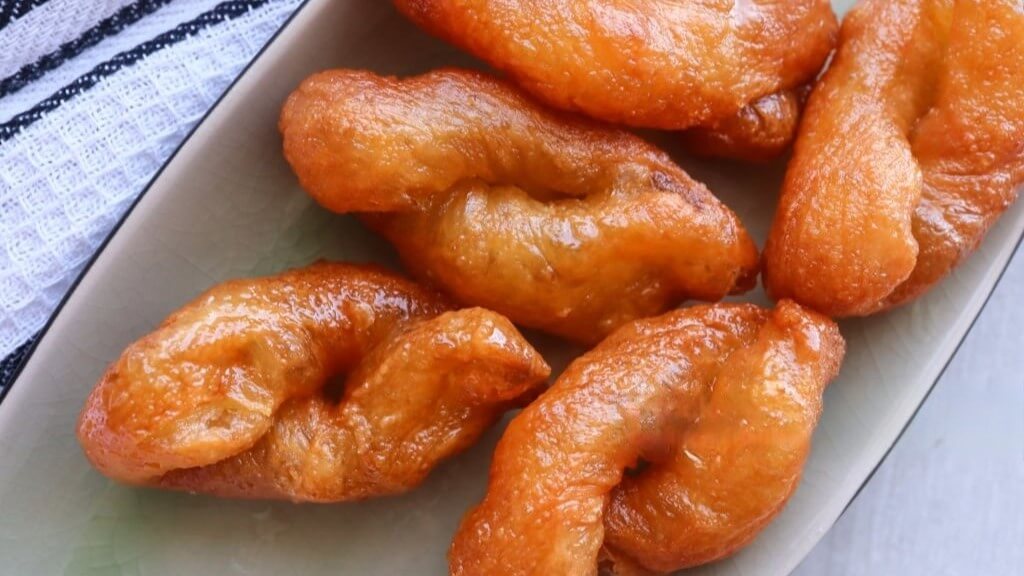Uncovering the Secrets and Delights of South African Cooking
South Africa, often referred to as the Rainbow Nation, is a land of astonishing diversity. Its landscapes range from the iconic Table Mountain to the sprawling savannas of Kruger National Park. Similarly, its people are a tapestry of cultures, each contributing to the rich and varied cuisine of the nation. South African cooking is more than just sustenance; it’s a reflection of the country’s history, traditions, and the vibrant spirit of its people. In this article, we embark on a culinary expedition, delving deep into the secrets of South African cooking, which have been lovingly passed down through generations.
A Multicultural Journey
South African cooking is a mirror of its multicultural society. From the indigenous Khoisan people to Dutch settlers, Cape Malays, Indian laborers, and more, each group has left its mark on the country’s culinary traditions. The result is a harmonious fusion of flavors, spices, and techniques that make South African cuisine truly unique.
The indigenous Khoisan people introduced staple ingredients such as maize, millet, and indigenous greens to South African cooking. When Dutch settlers arrived in the 17th century, they brought with them cooking methods like stewing and baking, as well as key ingredients like meat and dairy products.
Cape Malays, descendants of Indonesian and Malaysian slaves, contributed aromatic spices such as cinnamon, cloves, and cardamom to South African cooking. This influence is evident in dishes like bobotie, a fragrant baked mincemeat dish.
Indian laborers who arrived in the 19th century introduced South Africa to curry and other spice-laden dishes. These culinary contributions are best exemplified by the famous Durban dish, bunny chow.
Braai
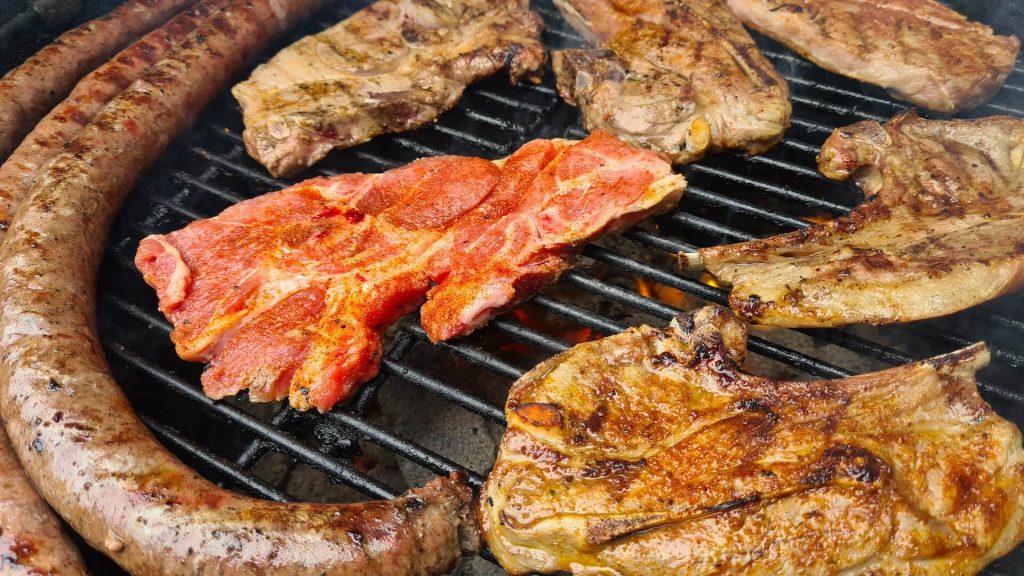
The South African braai is not just a way of cooking; it’s a way of life. It’s a celebration of the country’s love for meat and the great outdoors.
The tradition of braai dates back centuries when indigenous people cooked over open flames. Today, it’s a cornerstone of South African culture. Picture this: friends and family gathered around an open flame, the sizzle of meat hitting the grill, and the tantalizing aroma filling the air. The meats on offer range from boerewors (a coiled sausage) to succulent steak, chicken, and lamb chops.
What makes South African cooking at the braai truly special are the marinades and sauces passed down through generations. These secret recipes often include combinations of garlic, paprika, coriander, and more, creating a unique flavor profile for each family.
Bobotie
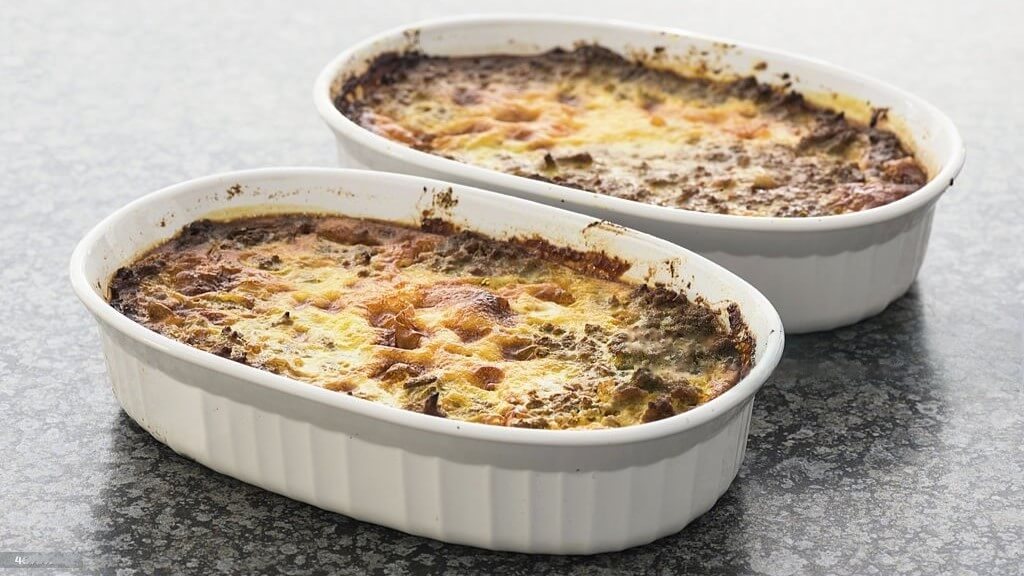
To understand South African cooking is to taste its history. Bobotie, a beloved dish, is a perfect example. Originating from the Cape Malay community, this spiced, baked minced meat dish topped with an egg-based custard is a delightful blend of Dutch, Indonesian, and African influences.
The dish’s history can be traced back to the Dutch East India Company’s spice trade, which introduced ingredients like curry powder and dried fruits to the Cape of Good Hope. These ingredients were skillfully incorporated into the local cuisine, giving rise to dishes like bobotie.
A typical bobotie recipe includes ground beef or lamb mixed with spices like turmeric, cumin, and coriander, as well as dried fruits like raisins or apricots. It’s then baked until golden brown, and the top is adorned with a creamy, golden custard. The result is a fragrant, slightly sweet, and utterly comforting dish that speaks volumes about the nation’s past.
Bunny Chow
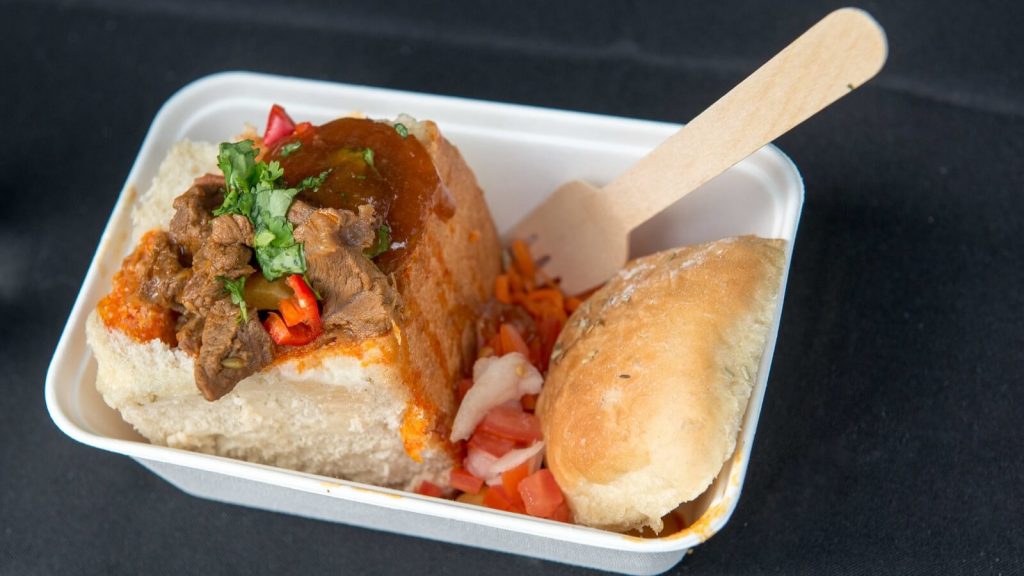
In Durban, South African cooking takes an unexpected turn with bunny chow. This delightful street food consists of a hollowed-out loaf of bread filled with curry. It’s a spicy, flavorful explosion that’s both a cultural experience and a culinary delight.
Bunny chow has a history rooted in the Indian community of Durban. It’s said to have originated when Indian laborers, who were not allowed to enter certain establishments, used hollowed-out bread loaves as containers for their takeaway curry. Over time, the dish evolved into a beloved South African classic.
The key to great bunny chow is the curry filling. Typically made with chicken, lamb, or beans, it’s seasoned with a blend of spices that includes cumin, coriander, and chili. The spiciness is often tempered by serving it in a bread “bowl,” creating a perfect balance of flavors and textures.
Potjiekos
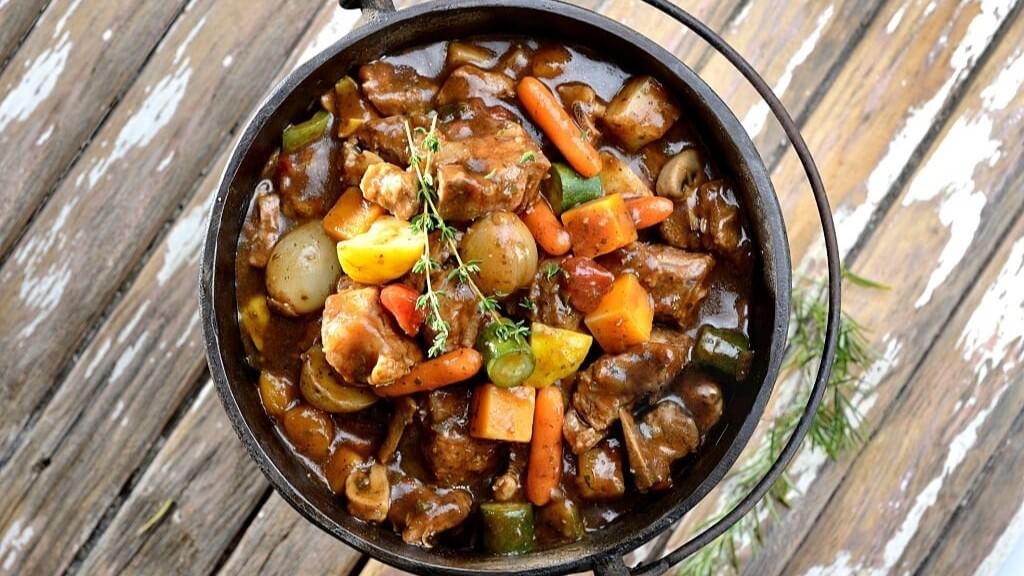
South African cooking has a secret that’s hidden in plain sight—the potjiekos. This traditional stew is prepared in a cast-iron pot, slow-cooked over an open fire. The magic lies in the long hours of cooking, allowing the flavors of meat, vegetables, and spices to meld into a delicious harmony.
The word “potjiekos” translates to “small pot food,” and the dish is deeply rooted in South African culture. Traditionally, the preparation and cooking of potjiekos are social events, with friends and family gathering around the fire to enjoy the process.
The ingredients in potjiekos can vary widely, but it often includes a mix of meats like lamb, chicken, or game, as well as an assortment of vegetables such as potatoes, carrots, and onions. Spices like paprika, curry powder, and bay leaves add depth of flavor. Slow-cooked over a gentle flame, the result is tender meat and a rich, flavorful gravy.
Biltong
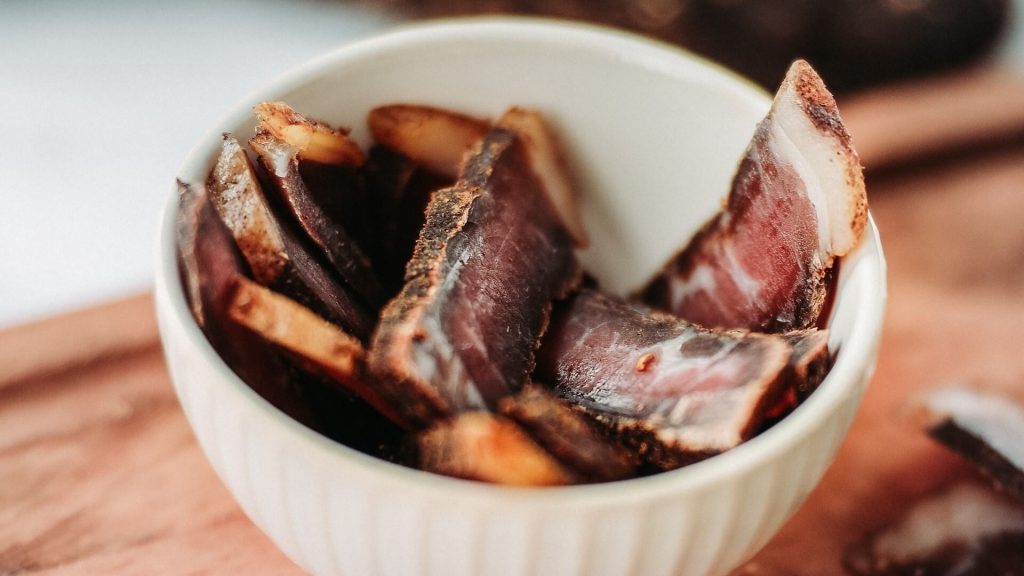
In the world of South African cooking, biltong reigns supreme as the ultimate snack. The process of making biltong involves curing and drying meat, typically beef, game, or ostrich. The result is a flavorful, protein-packed snack that’s perfect for a quick energy boost or a leisurely indulgence.
Biltong’s history traces back to South Africa’s early European settlers, who needed a way to preserve meat without refrigeration. The indigenous Khoisan people taught them the art of air-drying meat, which eventually evolved into biltong.
To make biltong, strips of meat are marinated in a mixture of vinegar, salt, and spices like coriander and black pepper. The meat is then air-dried for several days, resulting in a chewy and flavorful snack. Biltong is often enjoyed plain or with variations that include spices for added flavor. It’s a taste of South African tradition that can be found in markets, stores, and even homemade in many households.
Malva Pudding and Koeksisters
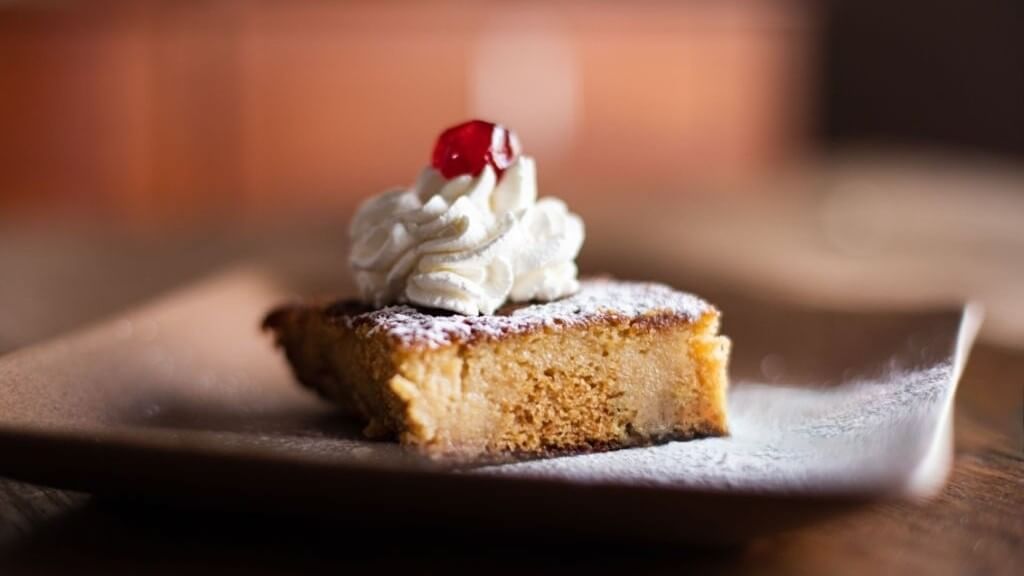
South African cooking doesn’t stop at savory delights; it extends into the realm of sweet temptations. Malva pudding is a warm, sticky dessert often served with custard or ice cream. Its rich, caramelized flavor is the epitome of comfort food.
The origins of malva pudding can be traced to Dutch settlers who brought a tradition of warm, steamed puddings to South Africa. Over time, the recipe evolved to incorporate local ingredients like apricot jam, creating a sweet, syrupy sauce that soaks into the sponge-like pudding.
A typical malva pudding recipe includes ingredients like sugar, eggs, flour, and milk, along with a generous amount of apricot jam. Once baked, it’s drenched in a warm sauce made from butter, sugar, and cream. The result is a dessert that’s both indulgent and comforting, often enjoyed during family gatherings and special occasions.
Koeksisters, on the other hand, are sweet, braided pastries soaked in syrup. These treats offer a delectable contrast of textures and flavors. The dough is made with flour, baking powder, and milk, creating a soft and slightly chewy interior. After frying to a golden brown, they are immediately dipped into a sugar syrup, infusing them with sweetness.
Amarula and Rooibos
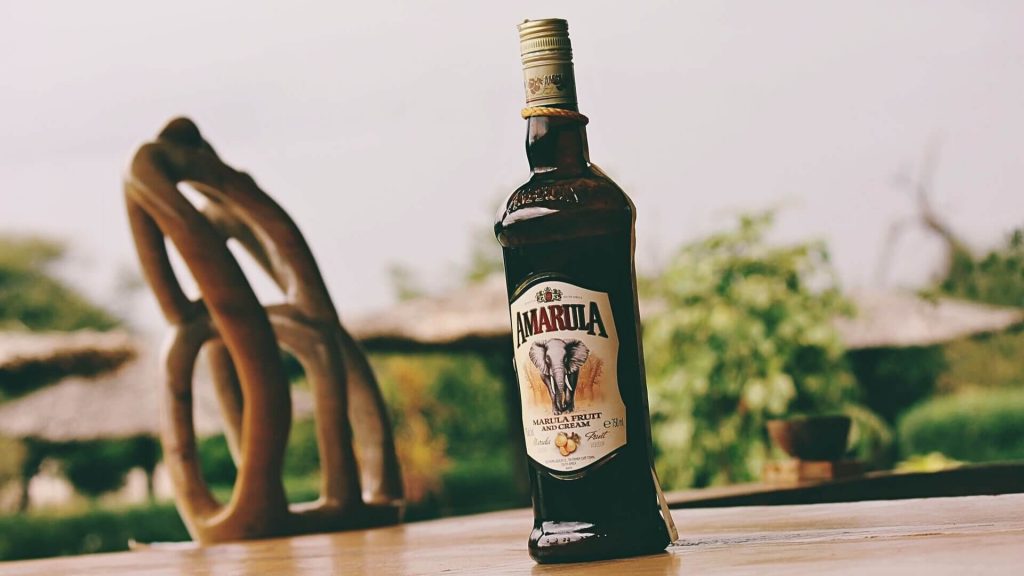
South Africa is not just about food; it’s also a land of liquid treasures. Amarula, a creamy liqueur made from the marula fruit, is a true South African gem. It’s often enjoyed on the rocks or used as an ingredient in cocktails and desserts. The marula fruit, native to Southern Africa, is a favorite among elephants, earning it the nickname “elephant fruit.”
Rooibos tea, on the other hand, is a caffeine-free herbal tea with a unique earthy flavor. It’s made from the leaves of the indigenous rooibos plant, which is found exclusively in South Africa’s Cederberg region. Rooibos is known for its antioxidant properties and is enjoyed both hot and cold.
Conclusion
Exploring the secrets of South African cooking is not merely a culinary journey; it’s an immersion into the heart and soul of a nation. Each dish tells a story, and each flavor carries a piece of history. From the fiery braais to the fragrant bobotie, the spicy bunny chow, and the sweet indulgences of malva pudding and koeksisters, South African cooking is a celebration of diversity and unity. It’s a testament to the resilience and creativity of a nation that has overcome adversity and come together in the spirit of sharing and savoring. So, when you find yourself in the Rainbow Nation, be sure to embark on a gastronomic adventure that will leave your taste buds forever enchanted by the secrets of South African cuisine.
